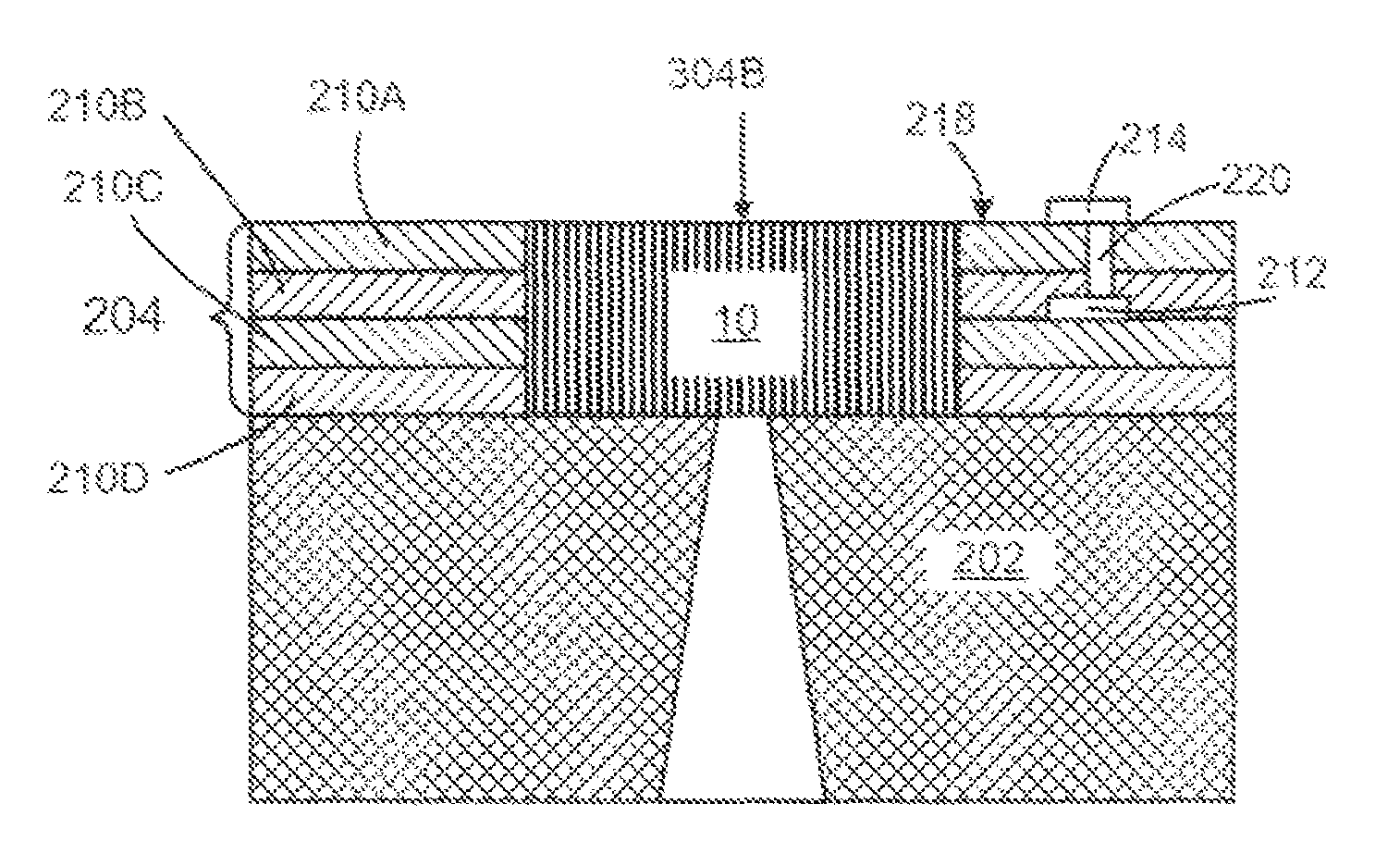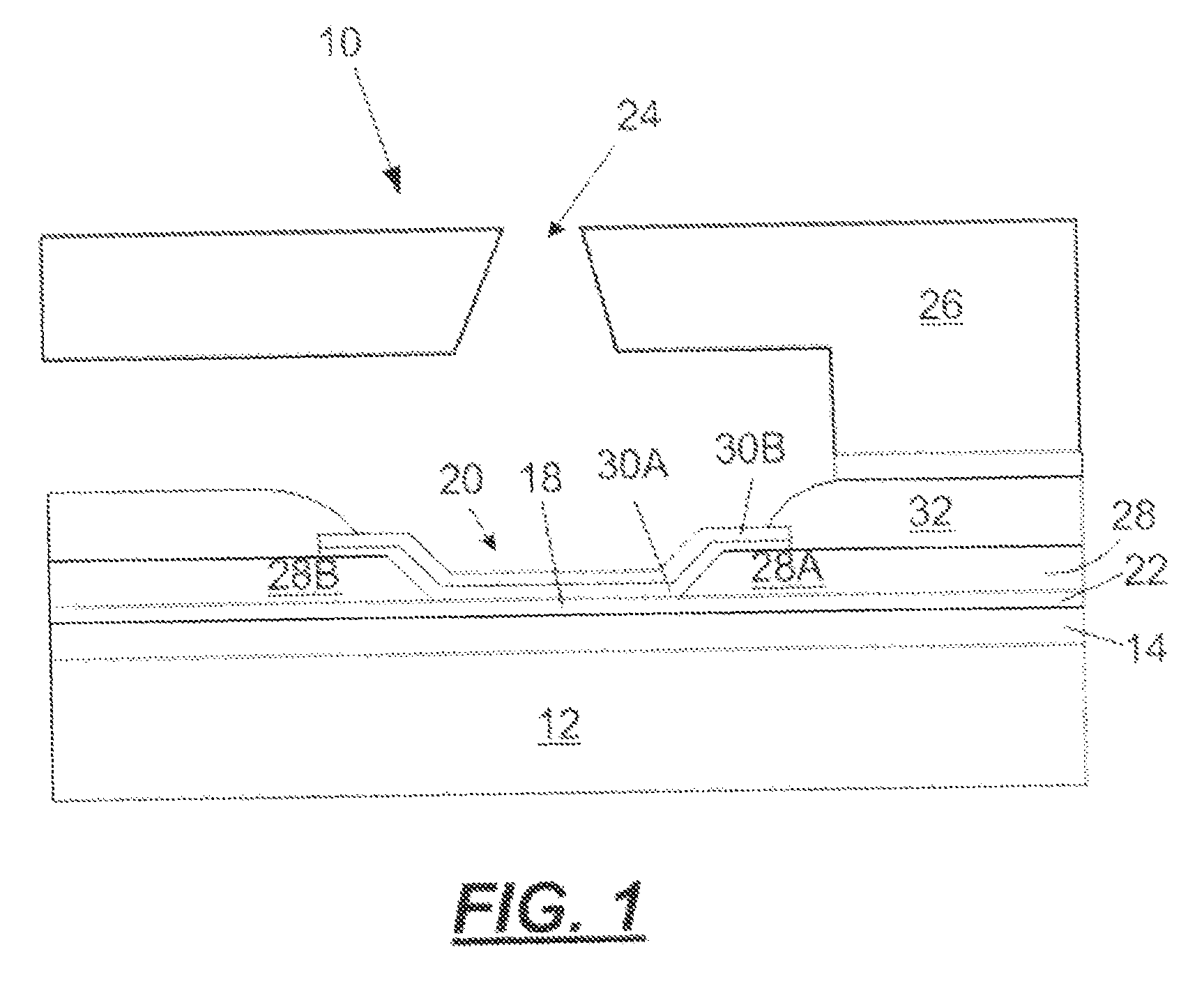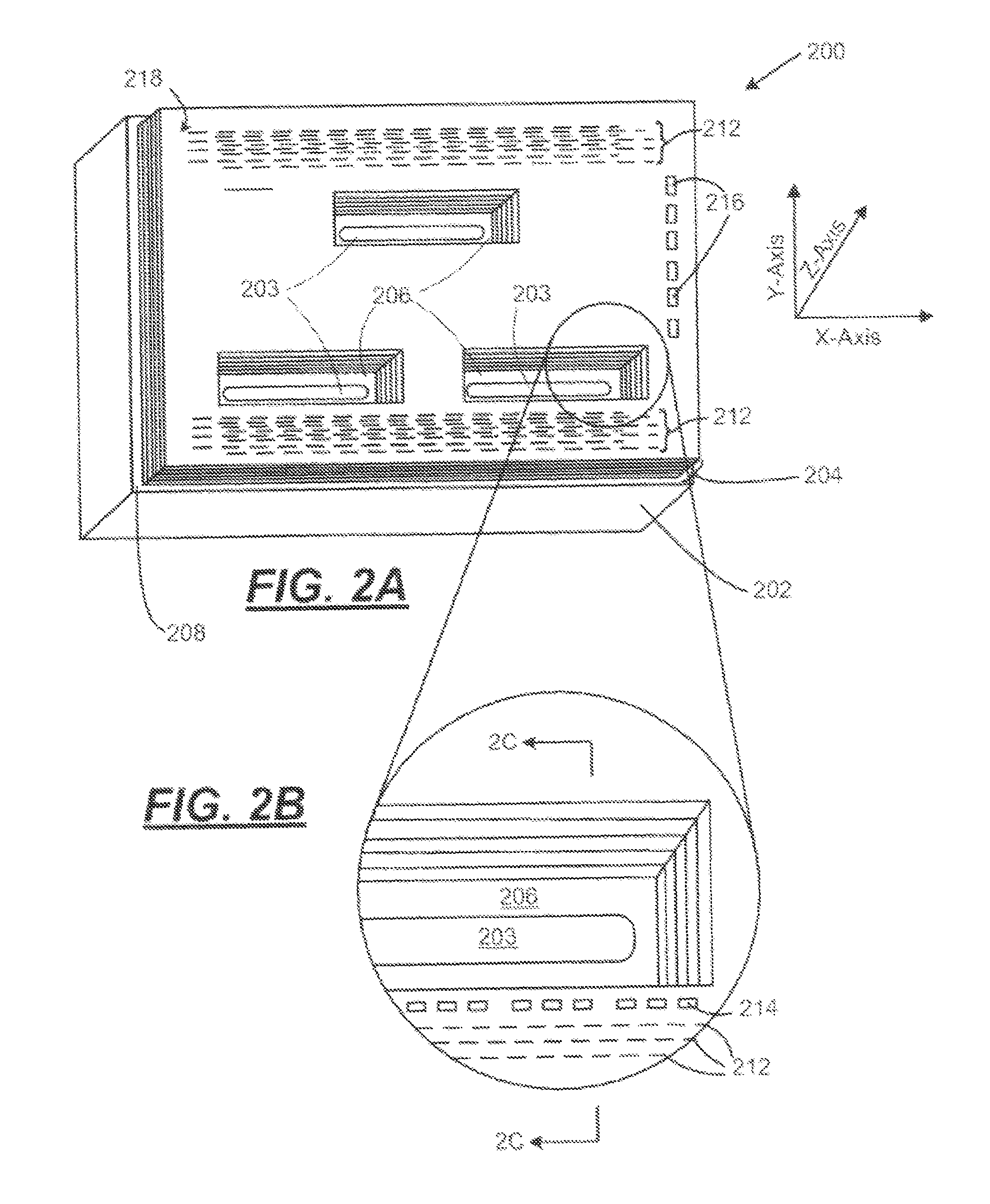Composite ceramic substrate for micro-fluid ejection head
a technology of microfluid ejection head and ceramic substrate, which is applied in the direction of variable capacitor, inking apparatus, transportation and packaging, etc., can solve the problems of compromising the desired direction of fluid-jetting, ejection head, and increasing complexity, so as to improve the encapsulation of conductors, improve the effect of planarity and high resistan
- Summary
- Abstract
- Description
- Claims
- Application Information
AI Technical Summary
Benefits of technology
Problems solved by technology
Method used
Image
Examples
Embodiment Construction
[0022]As described in more detail below, the exemplary embodiments disclosed herein relate to non-conventional substrates for providing planarized micro-fluid ejection, heads for micro-fluid ejection devices such as ink jet printers and the like. Such non-conventional substrates, unlike conventional silicon, substrates, may be used to provide large arrays of micro-fluid ejection actuators on a single substrate. For example, relatively long composite ceramic substrates may be used to provide page wide ink jet printers and other large format fluid ejection devices.
[0023]Components of the composite ceramic structure include two or more low temperature co-fired ceramic (LTCC) tape layers and a previously fired ceramic base material. An LTCC tape layer bundle made from the LTCC tape layers also includes relatively low resistance conductors encapsulated therein to provide electrical connections for micro-fluid ejection head chips attached to the composite substrate.
[0024]Micro-fluid eject...
PUM
| Property | Measurement | Unit |
|---|---|---|
| weight percent | aaaaa | aaaaa |
| temperature | aaaaa | aaaaa |
| temperatures | aaaaa | aaaaa |
Abstract
Description
Claims
Application Information
 Login to View More
Login to View More - R&D
- Intellectual Property
- Life Sciences
- Materials
- Tech Scout
- Unparalleled Data Quality
- Higher Quality Content
- 60% Fewer Hallucinations
Browse by: Latest US Patents, China's latest patents, Technical Efficacy Thesaurus, Application Domain, Technology Topic, Popular Technical Reports.
© 2025 PatSnap. All rights reserved.Legal|Privacy policy|Modern Slavery Act Transparency Statement|Sitemap|About US| Contact US: help@patsnap.com



